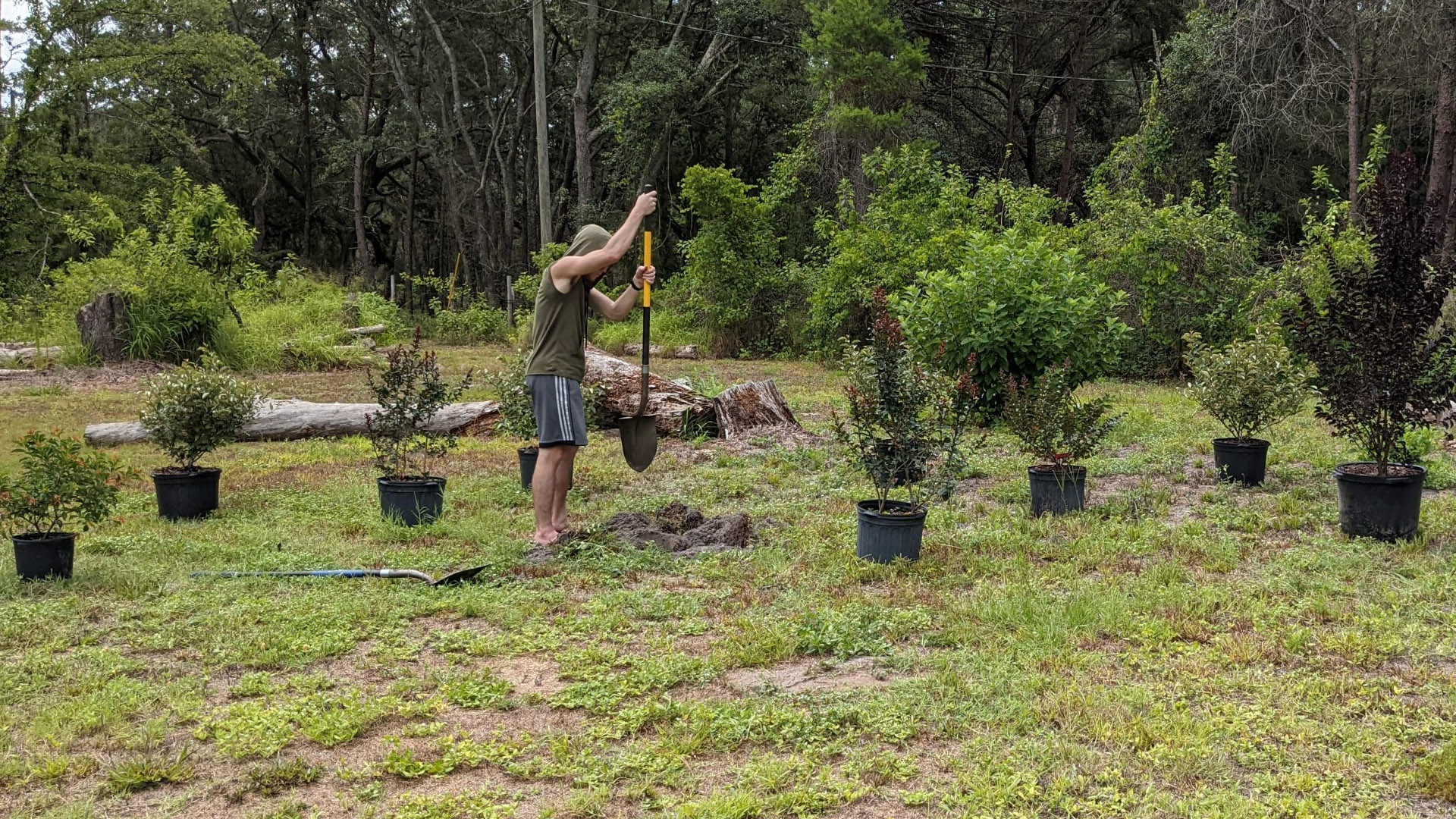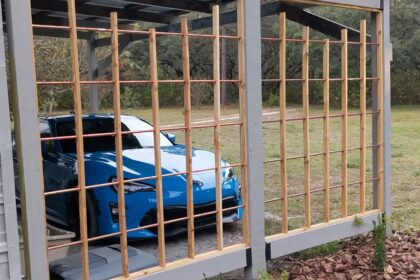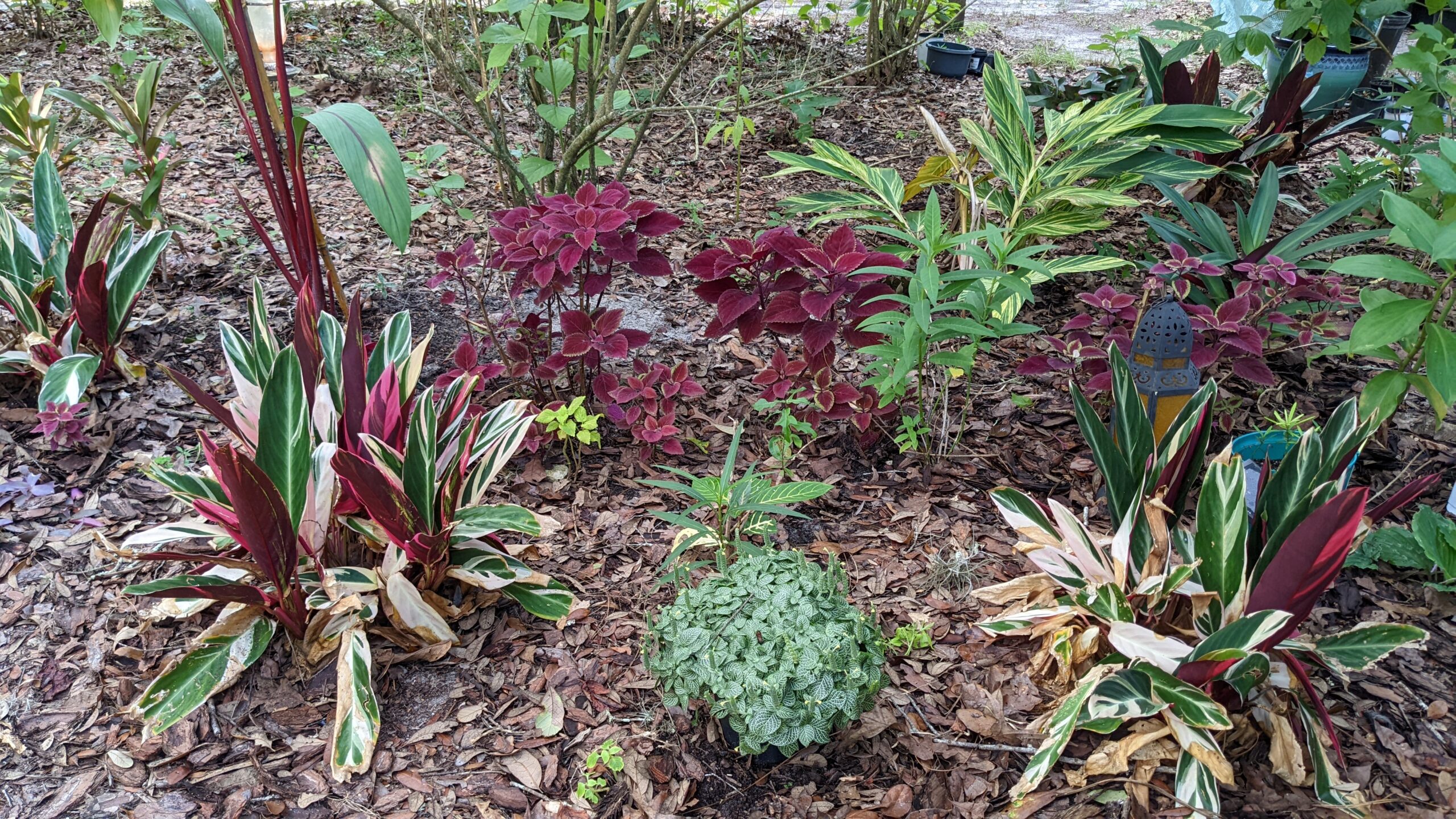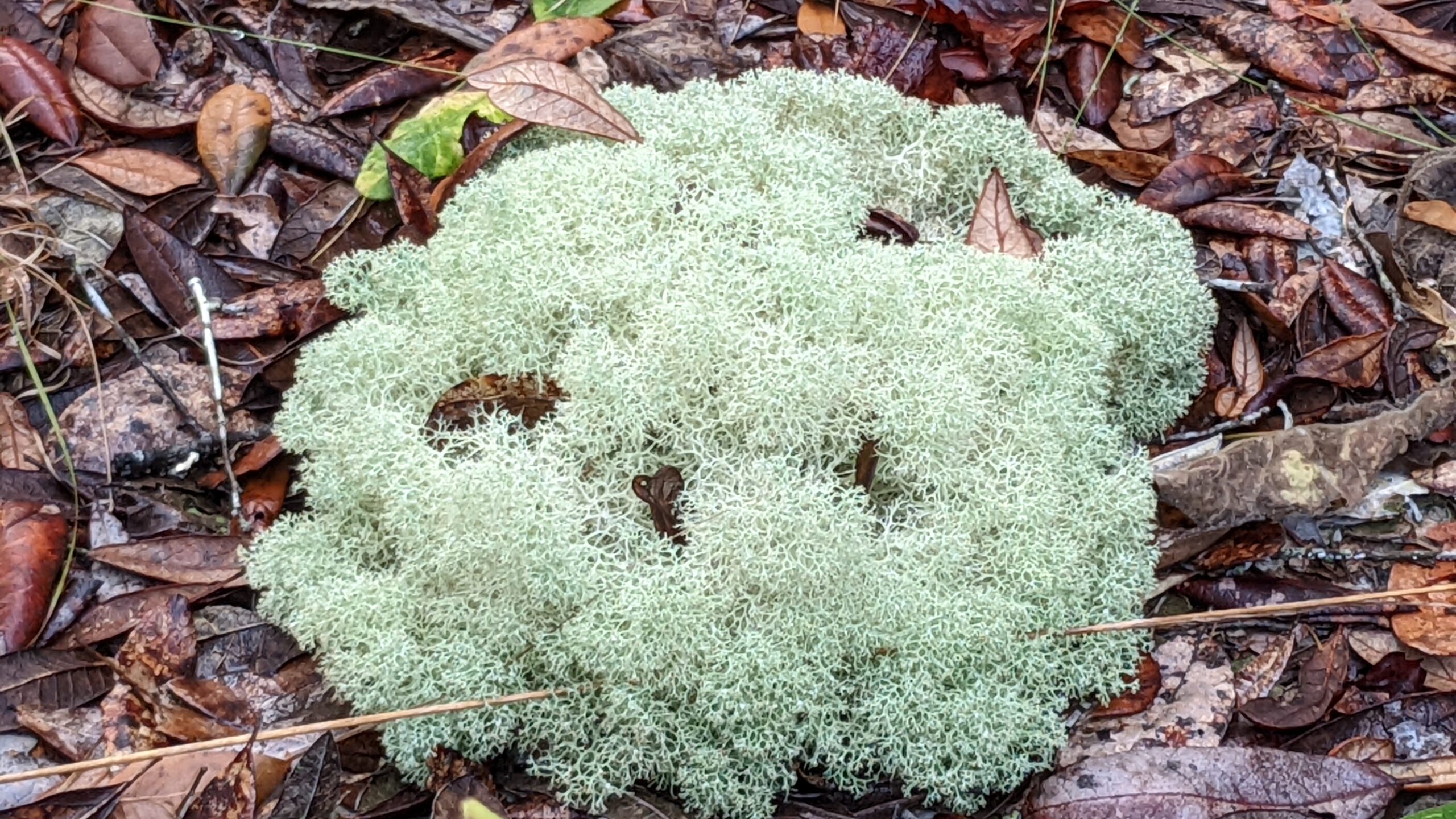Three or four years ago, my son and I planted a new kidney shaped garden in a former horse pasture. You can read more about the beginning stages of creating a kidney shaped garden bed in central Florida here. Basically, Hurricane Irma and the horses killed a bunch of trees that were threatening the powerlines and the electric company cut back the trees with a heavy hand. This left the property more open to the street than I liked, so I decided we needed a privacy hedge.
It seems as if it took forever to fill in and there are still holes that need to be filled in either with new plants or with existing plants spreading out or up as it were. I learned a lot through the process and experienced some plant loss and had to relocate the muhly grass, but, for the most part, the design surpassed my expectations.
What worked.
The layout of the kidney shape is gorgeous. At first it seemed so huge to cover but ultimately became too small and I have expanded the bed at least three times and can continue to do so since there is so much available space. I am, however, encroaching on the easement area and blocked electical trucks from one of the transformers. Well, a random pine tree grew in the easement that blocked it, I just blocked the area in my yard off the easement that allowed trucks to get around the tree.
The evergreen hedges are filling in nicely. The main backrow of viburnums are really doing well. I did space them pretty far apart and wound up filling in one hole with a chinese snowball viburnum that was nearly dead from being planted in too much shade in the garden behind the house.
The Washingtonia palms are really coming to their own and putting on some “beef.” For some reason, I thought they would be taller by now so they don’t grow as quickly for me as I had feared… which is a good thing. I prefer them remaining short for a while.
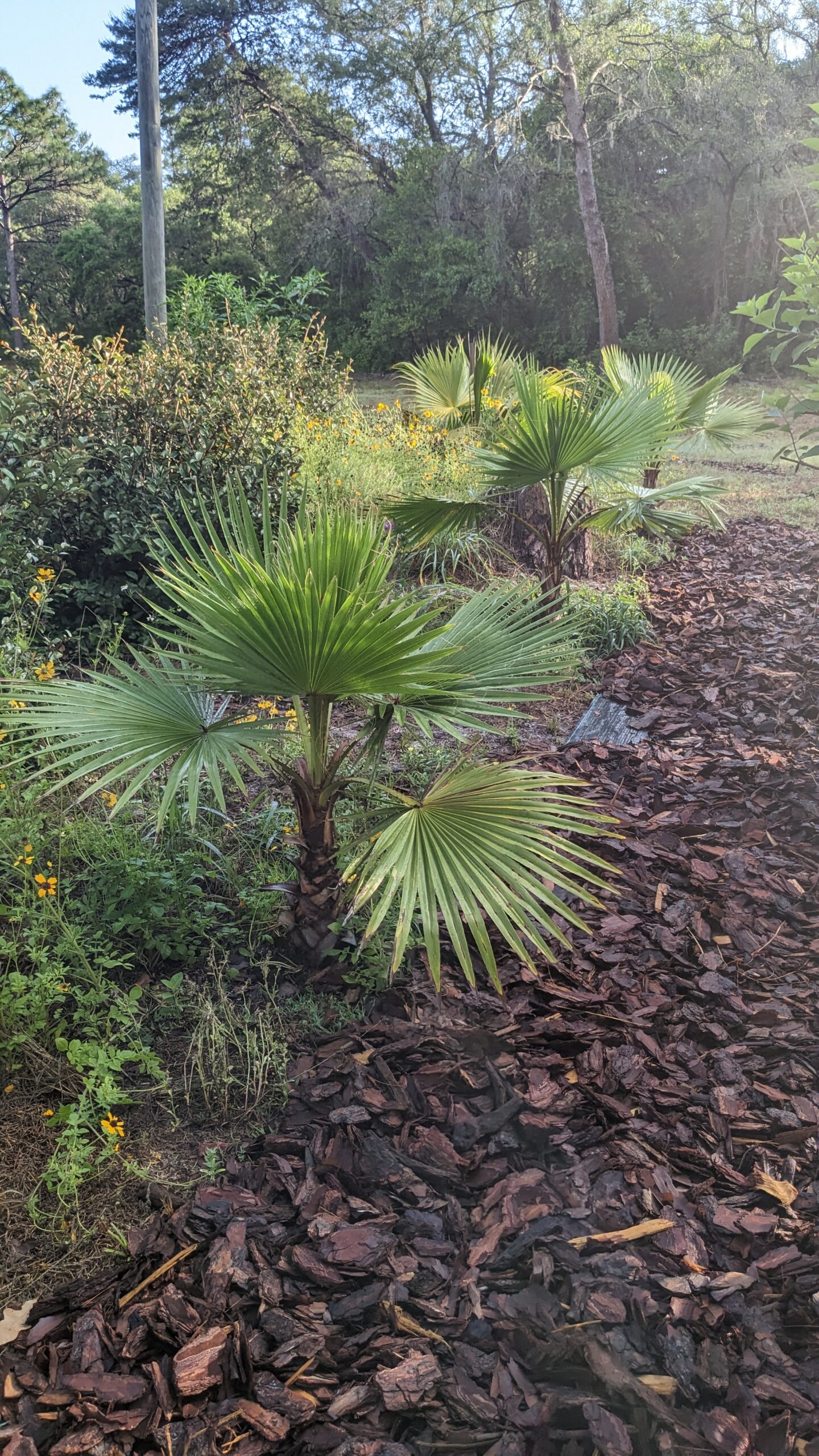
The crape myrtles, both bushes and trees, are glorious, particularly in July. They are aburst in mostly raspberry blooms. Also, the apricot or peach (I forget which) have been a powerful and gorgeous mainstay year-round. I decided to do several drifts for continuous color at the front of the border. I did purchase coral drift roses for the area closest to the firebush. They are gorgeous and add a slightly different hue but I feel I need to balance the color shift out on the right side of the garden.

The roses are absolutely spectacular and provide fragrance and delicate color. In this bed I have mutabilis, duchesse de brabant and belinda’s blush. I have since added maman cochet and one other mystery cutting.
I love the hardscaping elements as well. Joe trenched irrigation so I have a spigot with a solar light. Then I purchased an antique well pump. Most recently, I added a bird house and a bird bath with a solar fountain. These really add character but also provide respite and water for the pollinators and probably the occasional garden kitty.

During the spring, this entire bed is ablaze with a profusion of phlox and coreposis. If you plan to direct sow these, be prepared for them wandering outside of the lines! I allowed them to but this may not be your style and so, maybe, this paragraph should go in the section below if that’s you! One of the challenges here is that I refuse to mow them down and the weeds and grass grow among them causing a messy edge. I also take an inordinate amount of time pulling them once they have faded but that is by design as I want them to reseed for next season!
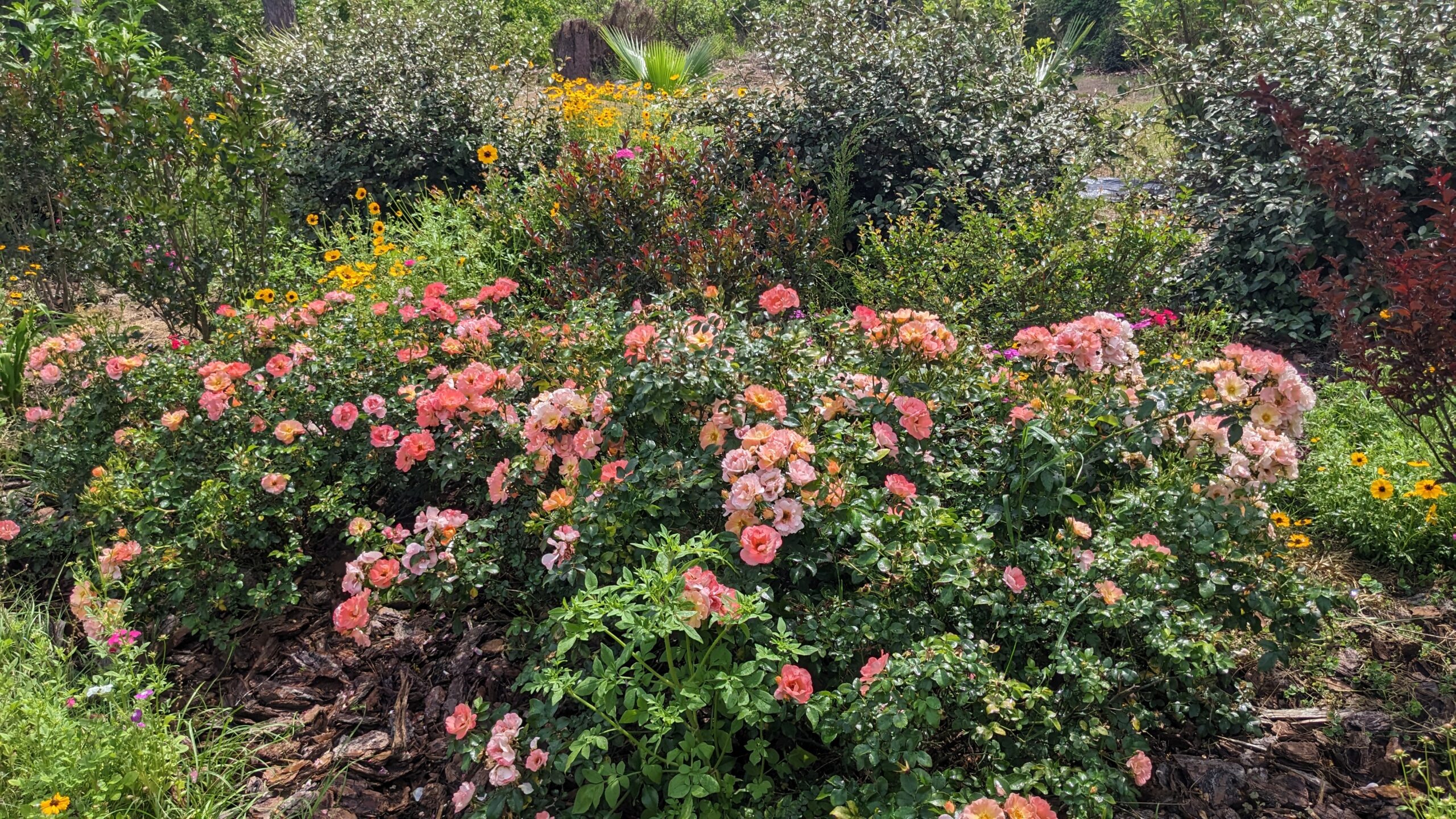
I love my firebush. It is the most heavily pollinated of all the plants in this bed. It is a prolific bloomer and puts on an amazing show of orange and yellow blooms. I love the additional color but it is very different than the peachy color of the drift roses, albeit in the same family. I balanced it out by planting coral colored drift roses but am still working on transitioning colors for more a more harmonious palette.
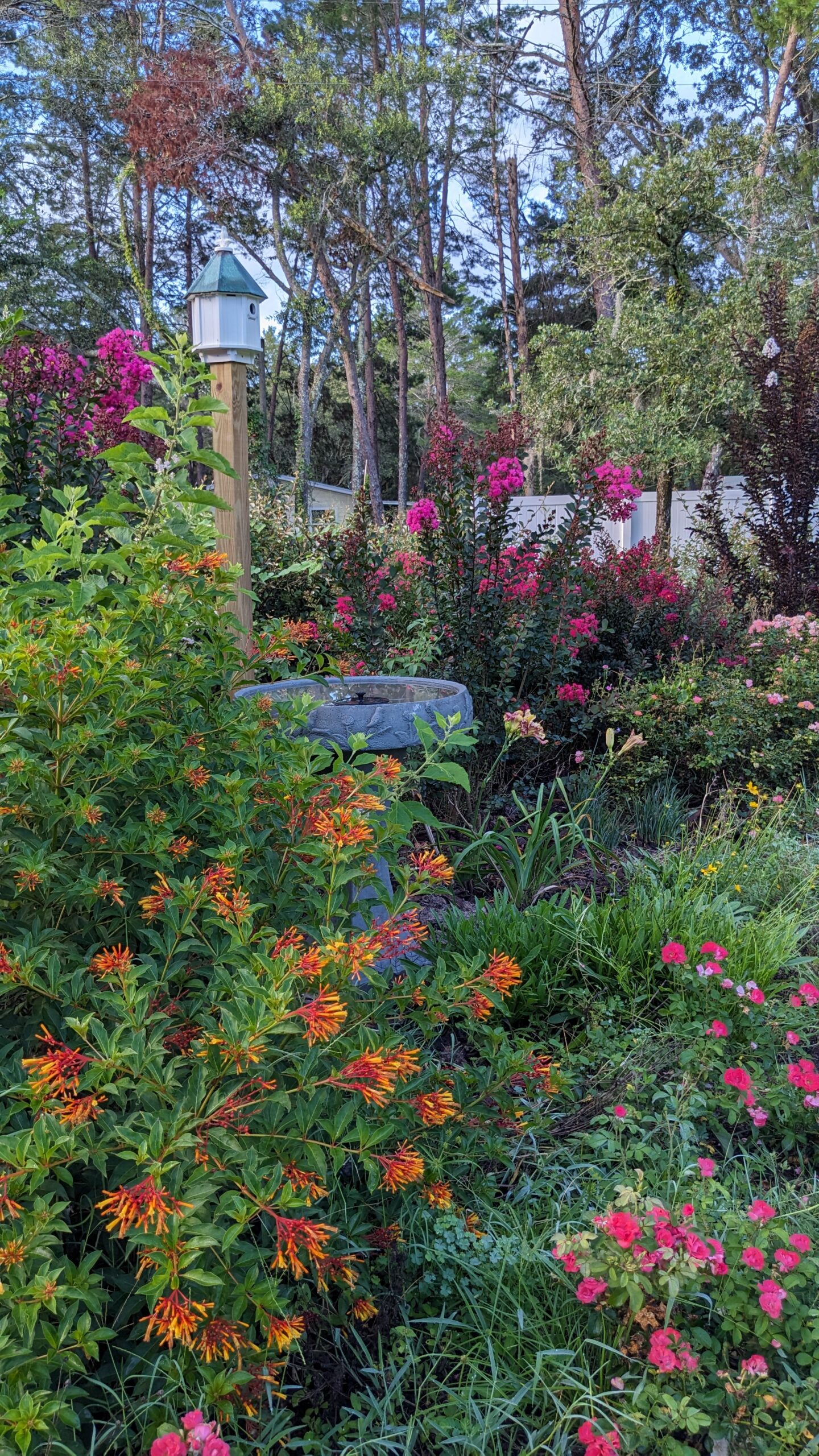
What didn’t go so right.
Splitting the chinese fan palm and transplanting the divisions in full sun in Florida was a huge mistake. I lost both of the offspring. Also, this palm needs fertilizer as it bleaches out in the hot sun and would probably appreciate more shade while it establishes.
Some of the plants that didn’t make it: oyster plant, new zealand flax, gaura. Some of the plants I had to move to a shadier location: sunpatiens, new zealand flax. Some plants that got crowded out and had to be moved: muhly grass.
A plant I added but will probably regret (although I love it and it is so happy here): bottlebrush I grew from a cutting. I planted it to fill a hole on the right side. The problem is, it will ultimately block the sun for some daylilies and roses so I will have to keep it trimmed or limbed up to minimize the shade it will cause. The other thing is that it has red bottlebrushes. While I love red, I don’t really have “red red” in this bed. All the reds are more raspberry or peachy/pink so the red will stand out. I keep telling myself to move it while it’s young, but I just don’t have the heart since it is thriving magnificently where it is.
I do have an abundance of weeds that are a pain to hand pull, especially the invasive big grasses.
While the silverthorns add a beautiful silvery blue hue as a backdrop, I keep reading that they are invasive… a detail the nursery neglected to provide. They do grow very rapidly and must be pruned heavily several times a year. However, I have not seen any volunteers pop up at all.
Vertical elements.
While the crepe myrtle trees were to provide the much-needed vertical element, they are still fairly “bush-like” and not adding the height I wanted. I do have the Washingtonias but they have not yet hit their “leap” year and are hidden behind the silverthorns. While the palms are evergreen, they are only so at the tops. Therefore, I added four narrow taylor junipers for evergreen columnar shapes directly behind the row of crepe myrtles. Super excited to see them perform.
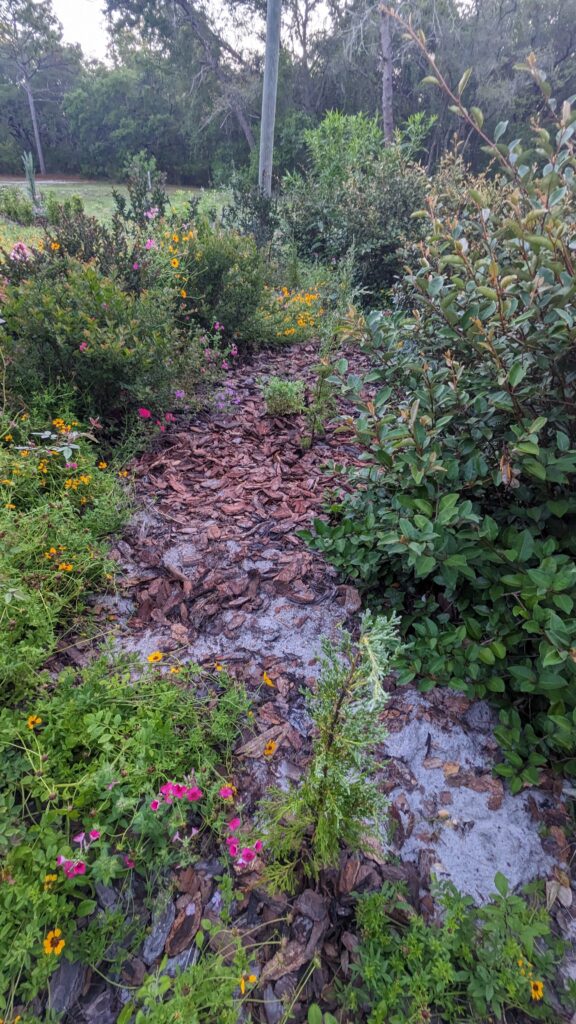
Future plans.
The center of the garden is pretty full and vibrant. The only modification I would make is to add annuals to the front of the apricot drift roses to add a third layer to the front of the border. The right side of the bed seems pretty new to me and I’m just waiting for some of the plants to take off and fill in. I added some Karl Foerster grass which seems to be struggling a tad in our scorching heat. I do want to get some more raspberry crepe myrtles to carry the drift behind the antique well pump.
More daylilies please. I love having drifts of color. In particular, I adore my peachy colored daylilies from Ladybug Daylily nursery. I definitely intend to get more white and peach light colored blooms. While I love my burgundy Desideratas, my typical go to palette is more softer pastels.
The nice thing about this island is that is is viewable from all sides. My immediate concern was how this looks from the studio, the RV pad and the drive up to the house. I suppose the first concern was to block the yard from the street which is a success that was certainly achieved. Therefore, all of the plants on the property edge side are large screening plants. However, there is plenty of room to also grow shorter layers on that side… so we’ll see how that goes. In the meantime, I have started to lay mulch and landscape fabric down on the tall side. Initially, I just dug holes in the grass and plopped in the viburnums and palms. Since then, I started to expand the bed and will ultimately mulch this area to make it a cohesive bed.
I have been toying with the idea of adding a mowing strip of bricks to line the edge of the bed. I often let the edges slip and they become engulfed in grass and weeds, which doesn’t make for a properly preened border. I am happy to know, however, that a naturalistic style is trending (according to reporting from the Chelsea flower show) and leaving wild areas of the garden totally encourages pollinators to stick around.

